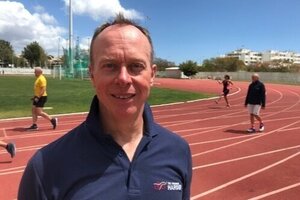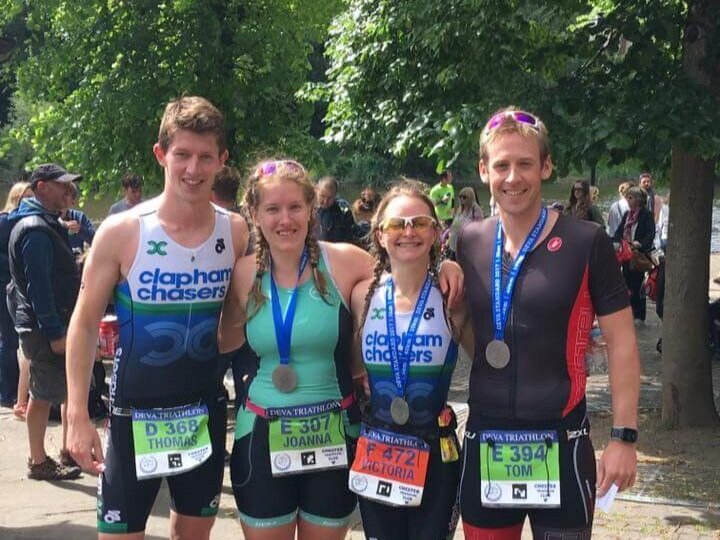I'm a female athlete new to endurance sports; what do I need to think about?
Coach Tim helps new athletes familiarise themselves with the new sport of triathlon and how to navigate the first few steps of taking it more seriously.
Due to CoVid-19 and the various degrees of lockdown over the last year, we have all engaged in activity to get out into the fresh air. This has meant we have reconsidered how we enjoy and appreciate the benefits of fitness. Together with that, we have seen an increase in sports participation from walking to running and cycling.
Suppose you find yourself recently starting to increase both the frequency and duration of running or cycling or even both. In that case, you are probably having those seeds of thought beginning to sprout, asking you, 'so what does this mean to me? How can I develop further?'
As a coach, it is fantastic to hear that! Let's have a closer look at some of the practical elements of getting into triathlon before men and women's physiological differences to ensure you fall in love with this sport. From a running perspective, it's relatively simple. The most important part is the running shoes; I would recommend a gait analysis to ensure you have a shoe that supports your current running style. Due to the high impact of running on the joints, start with a walk/run strategy and build up slowly to gradually adapt your body. The rest of the kit, shorts, t-shirt etc., can be done on a budget. However, as you begin to enjoy the sport and increase fitness and distance, then the fabric's wicking properties will help with the comfort and remove any chaffing; this will only help to add to the enjoyment. With clothing, you should go with what is comfortable for you and what you feel happy training or racing in. Remember that the first triathlon gear you buy is an opportunity to learn what fits, works and feels good; your second item will be a much better purchase, so don't spend too long thinking about it; just choose things that will get you out of the door.
Cycling is a little more interesting, with more choice; all of this adds more to the overwhelming confusion and potential distractions. As athletes, we are all different and should focus on finding what works for us. Interestingly more bike manufactures are beginning to revert to unisex fit bikes. Trek now have a woman-specific racing team who ride the Madone SLR 9 Disc. I've known female athletes that are more comfortable on a man's frame bike. Therefore, I would encourage every athlete to have a comprehensive bike fit to find the optimum size and fit. You spend a lot of time on a bike. You must be comfortable and relaxed by getting the right fit with the appropriate adjustments to stem, handlebar width and saddle. Don't be afraid to do some research and ask questions. Liv (now made by Giant) are probably the best-known women-specific bikes. Even if you get a men's frame, make sure your touchpoints (handlebar and saddle) are women-specific or tailored to you. It will make a world of difference.
So you've got the kit and the dedication to start taking triathlon a bit more seriously. How do you find the right club for you? As a female athlete, how do you fit in, which can be a male-dominated environment? There's been considerable growth in women's sport, and I would be surprised if any club didn't welcome you and make you feel energised to join the sessions. Depending on the club's size, they may even offer female-specific sessions to help encourage you and female coaches to help provide support. However, if you feel you would like a coach to help you achieve your goals, then do just that regardless of gender.
There are benefit's to training with the men, which is no different from training with any athlete who happens to be slightly stronger than you. A bit of healthy competition is good at times in the right environment, a run session on the track, getting to the top of the hill first while out on the Sunday ride. It builds fitness and, more importantly, confidence in your own ability. Be sure that training with men doesn't discourage you, as there are differences which give each sex advantages over the other.
Whether you run marathons, cycle sportive's, compete in triathlons or just exercise to stay fit and healthy, training works similarly for both sexes. As you train longer and harder, you get fitter. Your body can deliver and use more oxygen, you can push the higher pace, you become stronger and leaner, and your performance improves
As a woman, you have a smaller heart, smaller heart volume and smaller lungs. This means woman pump out less oxygenated blood with every beat. This means you have to breathe more often. Therefore your respiratory muscles have to work harder and use a lot of energy.
Men tend to have bigger type II fibres and the energy-producing enzymes to go with them. This means men can outperform women in the shorter, more intense efforts. Here it is: women have a greater advantage in the endurance world as your type I fibres are much more efficient at using fat as fuel and sparing glucose.
Everything is trainable. Can a female athlete train her type II fibres for those more intense efforts – absolutely. Don't be afraid to strength train; actively include it in your training programmes. By understanding the differences, we can build and develop upon them.
There are physiological differences between men and women, which we shouldn't ignore. If you have two cyclists, a man will have larger muscles, chest and biceps. But those heavy upper body muscles will be felt when attempting a 10% climb. A woman who is lighter in the torso but can still be powerful in the hips and legs will make that 10% climb far more manageable as they are carrying less dead weight. We have often seen women outperform men; most of this is in the mind!
I'll finish where I started; all athletes are different regardless of sex, different needs, goals and outcomes, all at different times of the year. Communication is always crucial to a great coach, athlete relationship, and nothing should be off the table. Develop those listening skills, and be open to having any conversation to help grow either as an athlete or a coach.
Websites :

Qualified as a coach in 2010, in 2014 began coaching with a local Triathlon Club, in 2018 completed BTF level 3 coaching course. 5 years later still enjoying the training but now concentrating on the coaching. Sharing knowledge, helping and supporting athletes achieve the best they can be.
Visit Tim's
Coach profile
We’re here to help
Tri Training Harder are one of the leading Triathlon coaching providers in the UK, using our wealth of experience to unite scientific and technological research with already well-established and successful best practices, to create a formula for triathlon and endurance coaching that works.
The result is an honest, dynamic, yet simple new way of constructing an athlete’s training to allow them to reach their potential.
If you’re planning your next season, just starting out in the sport or are looking for extra guidance at the very top end of the field, we are here to help, and our coaches would be delighted to hear from you. You can contact us via the website, and one of the team will be in touch.

